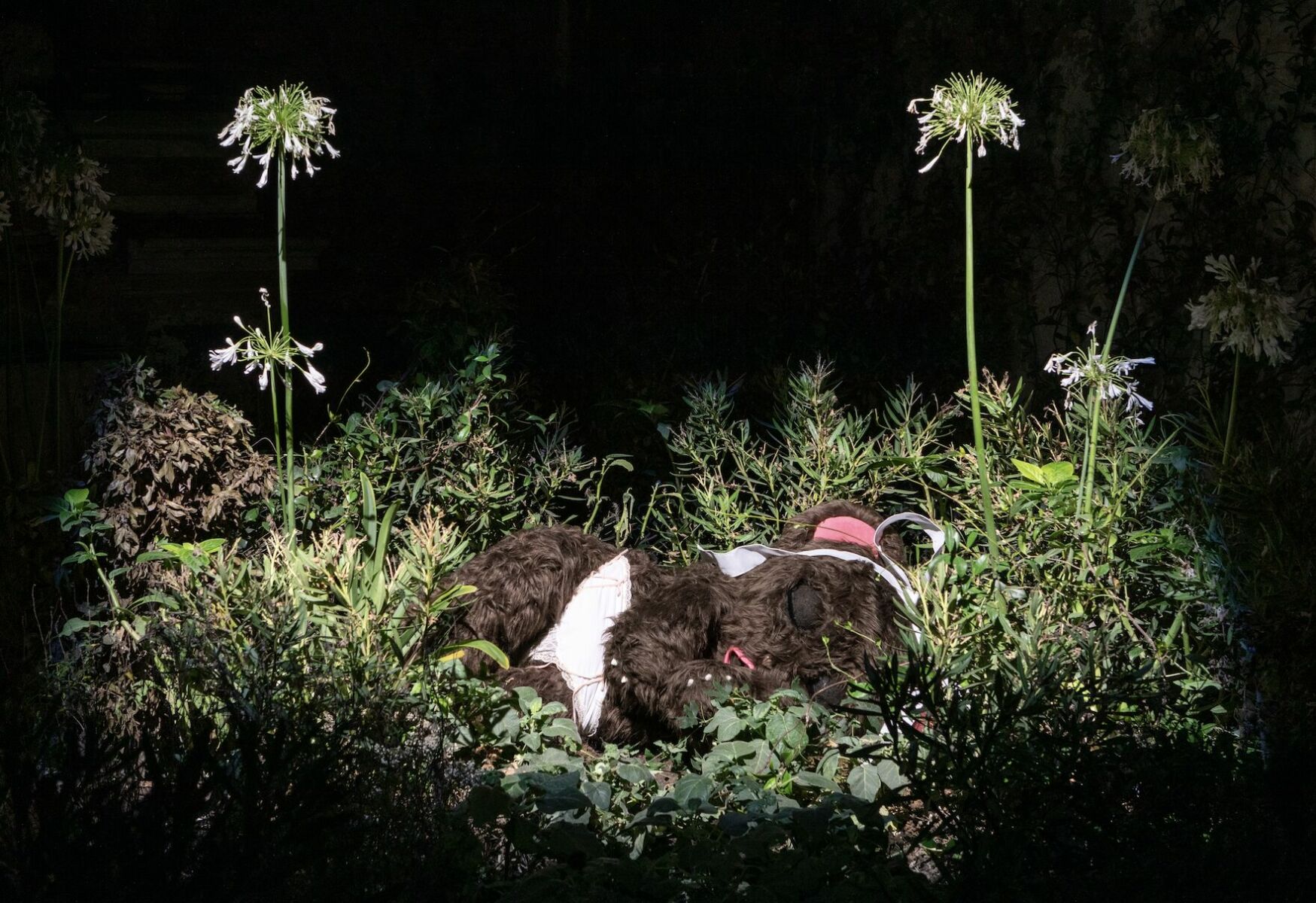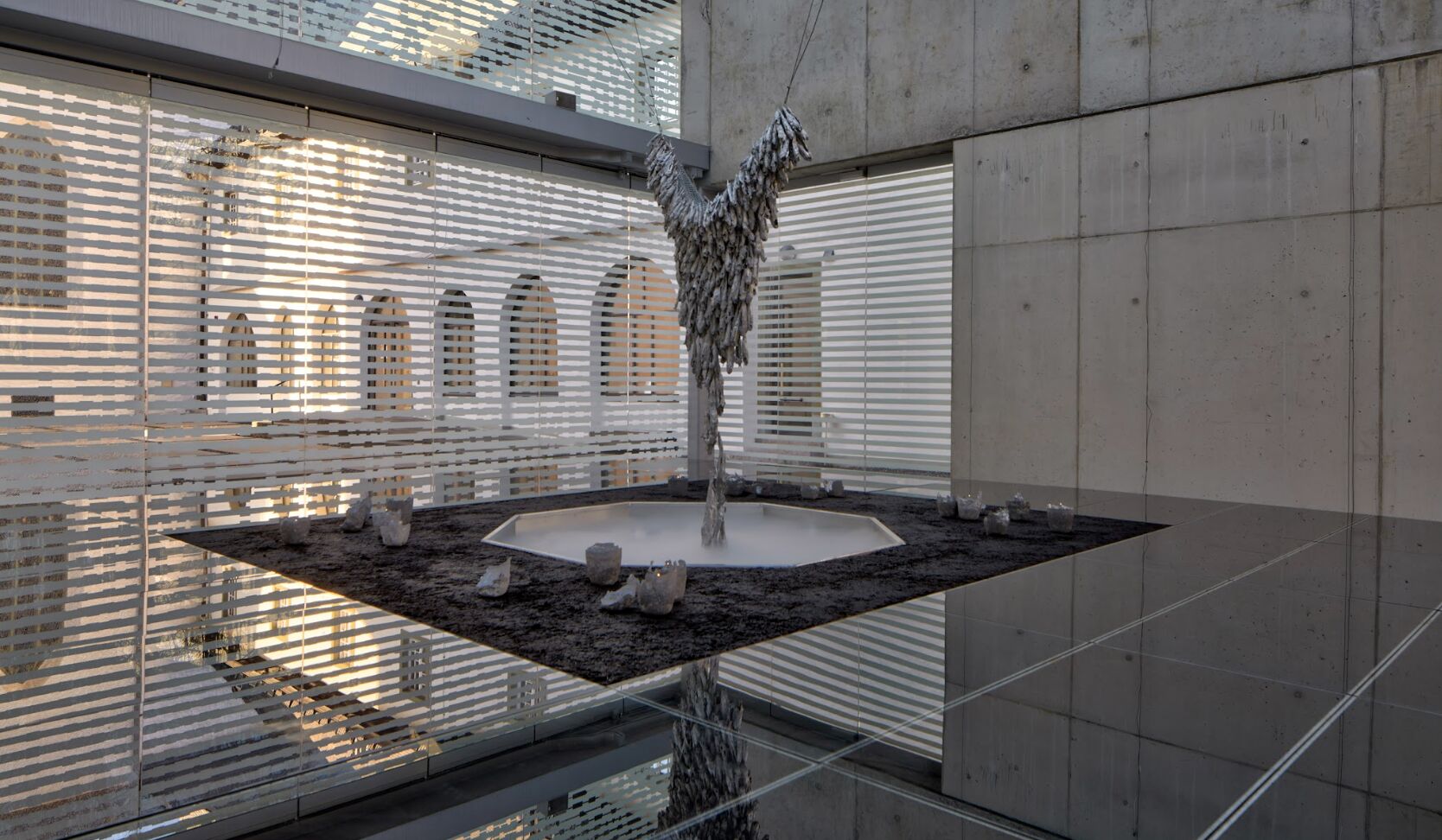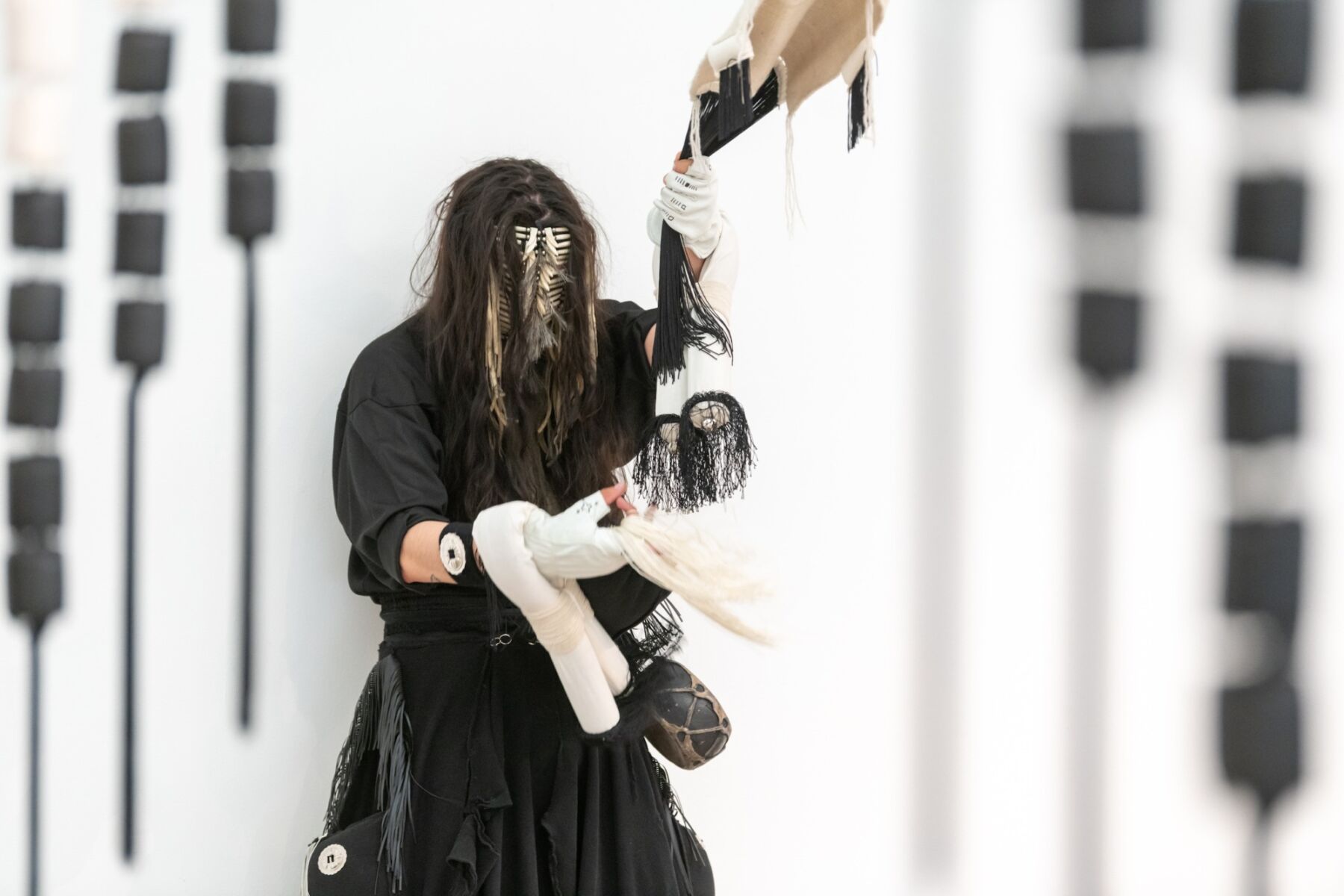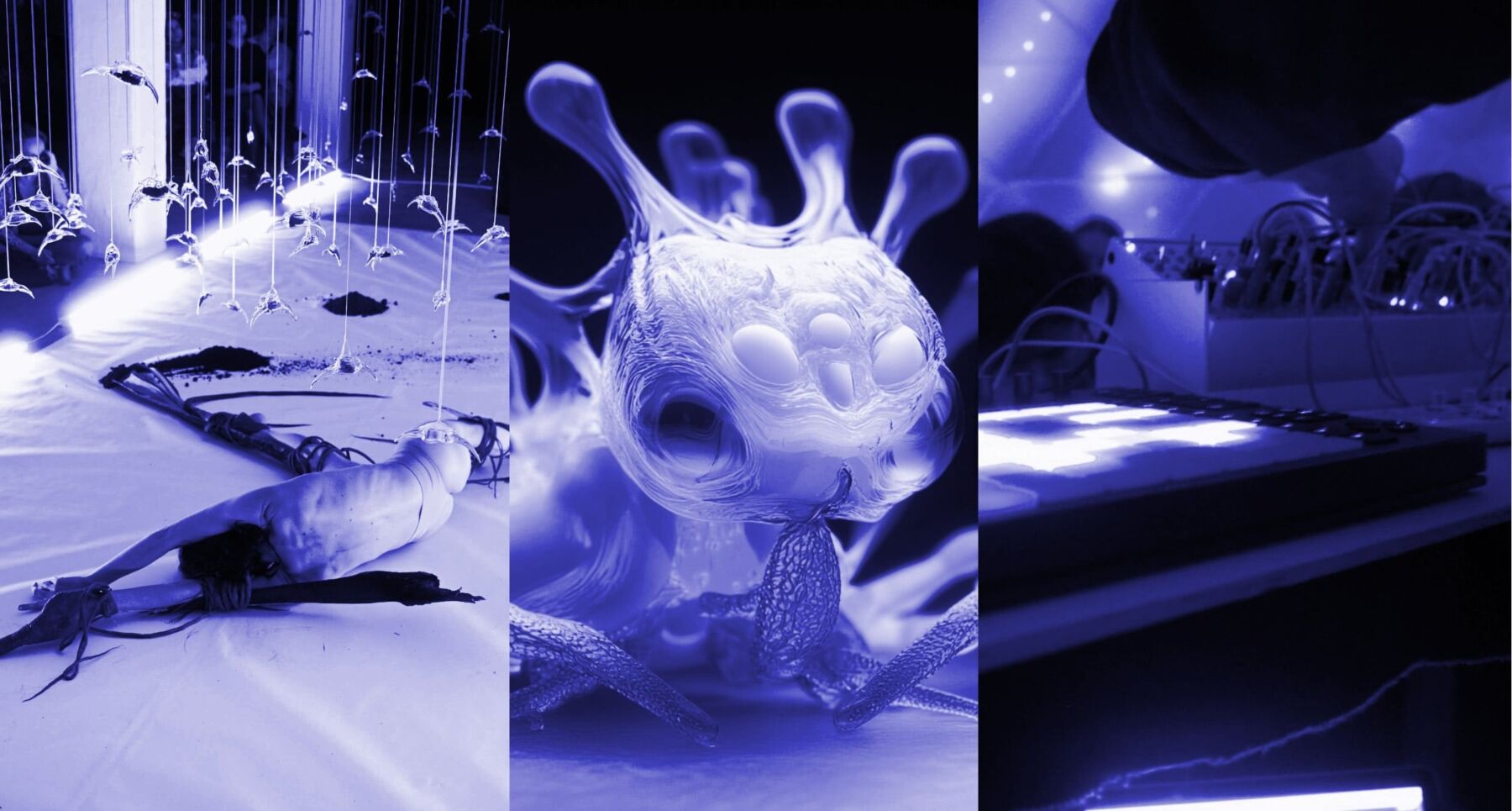Text by Juliette Wallace
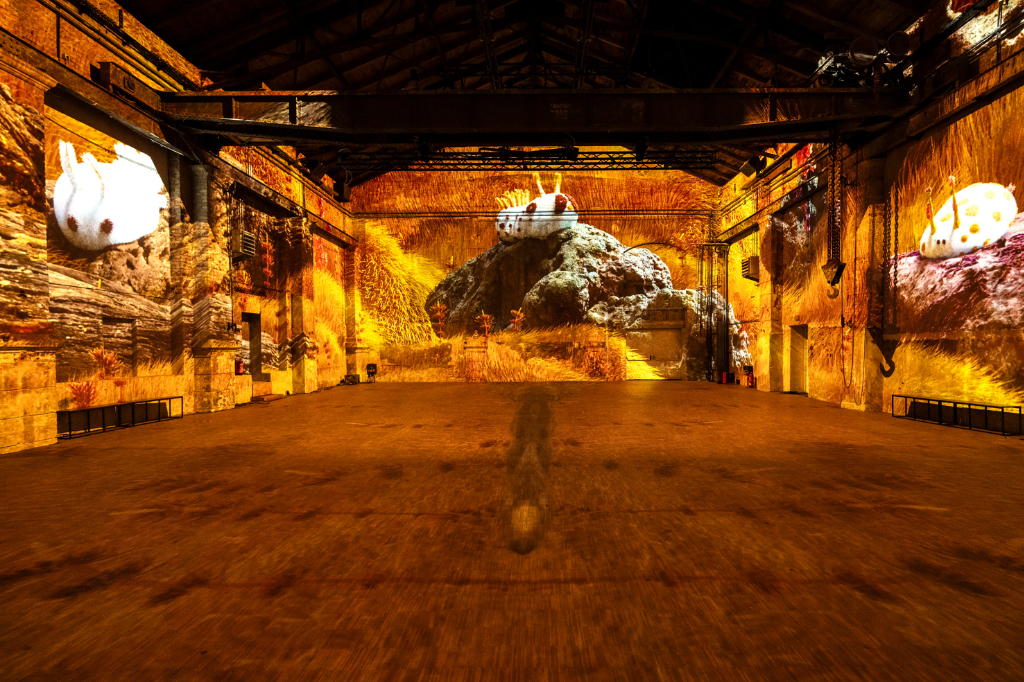
On the 29th January the NASA space agency and their German partners from the Goethe University in Frankfurt discovered something fundamental about the origins of our planet. A finely tuned space-probe – the OSIRIS-REx – was used to examine material that had been extracted from an orbiting mass, the Bennu asteroid. What was revealed were some of the building-blocks of life.
The next day, on January 30th, ORIGINS: Life’s Epic Journey, opened at Kunstkraftwerk Leipzig, just a three hour train ride away from the Frankfurt laboratories. The uncanny timing of these two events pays tribute to the foresight, sensitivity and relevance of the Leipzig show, making the experience of it all the more exciting.
Hosted in the impressive re-appropriated factory space, Kunstkraftwerk Leipzig, just off the Karl-Heine canal, ORIGINS: Life’s Epic Journey is a multi-sensory thrill that immerses the viewer in a world both familiar and altogether foreign: planet Earth. Through the close collaboration of artist Markos Kay – a multidisciplinary artist working at the intersection of science and generative art – and the current director of the Kunstkraftwerk Leipzig, Paolo Löffler, a powerful narrative of our planet and its origins is mapped out across the raw, stripped-down interior of Germany’s pioneering space for digital art. The topic is huge, the project ambitious and the meaning significant and somehow, against the odds, ORIGINS is a resounding success.
What stands out about this exhibition is that nothing about it is banal. ORIGINS is plainly an honest venture, born from the brains of two enthusiastic, authentic and somewhat eccentric individuals whose passions for technology and art have combined to create something big. [Kunstraftwerk Leipzig’s] reputation for pushing the boundaries of experimental art made them an ideal partner for this ambitious project explains Markos Kay [1]. The idea was to give the viewer an entry into the mystified source of life as we know it. ORIGINS invites audiences to engage intuitively, sparking their imagination and encouraging them to form their own connections and questions [2].
The epic project, tracing trajectories back 3.5 billion years, spawned from the seeds of Kay’s artwork, aBioGenesis: a beautifully detailed digital representation of life’s origins on earth through a conceptual reimagining of the “lipid world” theory. The work is, appropriately, the opening piece at the exhibit, acting as an ‘amuse-bouche’ and kicking off a parkour of eleven exhibition spaces. The colourful, playful piece is displayed as a screen cocooned in a self-contained, mirrored cube with a dynamic soundtrack both hypnotic and sensorially engaging.
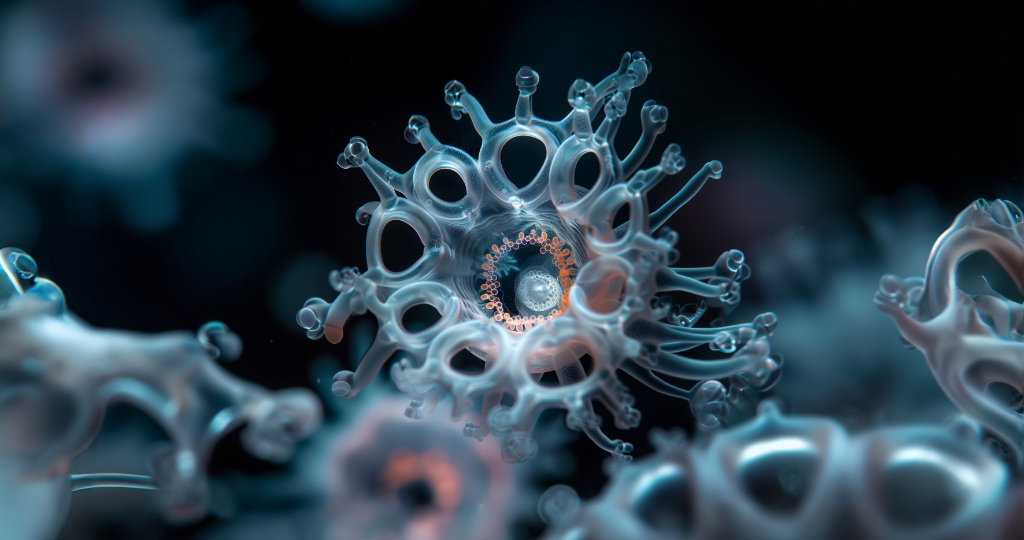
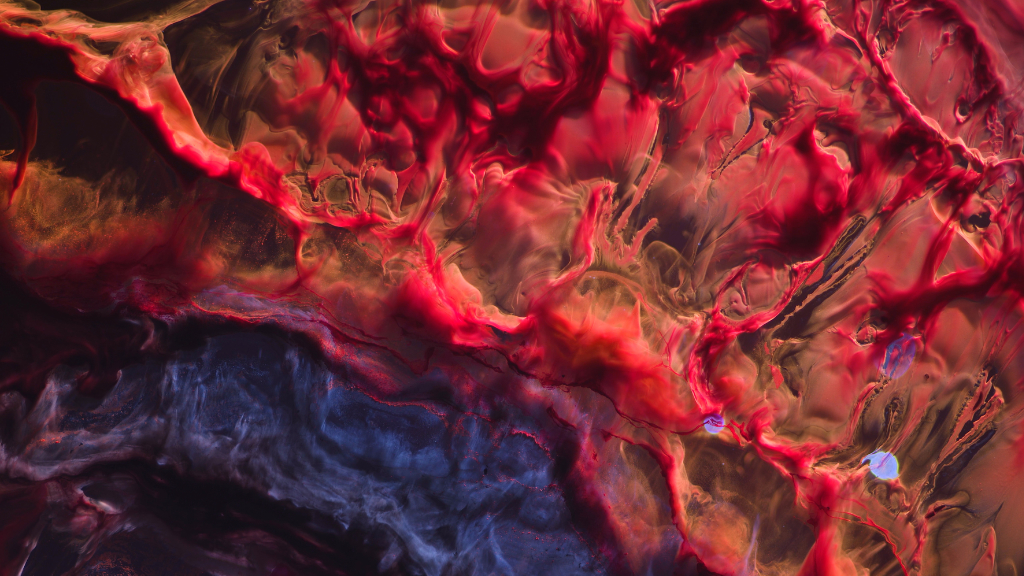
Löffler, who has recently taken over the Kunstkraftwerk space from its previous director, his father, Markus Löffler, had seen a version of aBioGenesis and it inspired him to reach out to Kay to collaborate on a project. Markos said yes and it all happened very organically from there Löffler explains on our tour of the show [3]. As the two chatted it became apparent to Löffler that Kay had been waiting, perched on the edge of his proverbial seat, for an opportunity like this. The idea simply poured out of him says Löffler, and so the project began very quickly to take shape. Kay outlined the four chapters that would act as the framework for the ORIGINS journey: The Birth of the Universe; Sun and Earth, Nucleosynthesis; The Primordial Soup, and it grew from there.
Within the exhibition an introductory room, a kind of inhabitable Contents Page, presents the main concepts, explaining the relationship between medium and development through still-image highlights of a selection of works. It is divulged that throughout the show analogue works are employed to represent the very beginning of the universe, AI generators provide the medium for the Sun and the Earth chapter and, finally, 3D images are used as conveyers of the earliest life-forms. [W]e’re using technology to mirror nature‘s own creative processes [4].
Fourteen artists from nine countries have joined together under Kay and Löffler’s inspired guidance to bring to life this complex artistic vision …creating a tapestry of innovation and creativity that enriched every chapter of the story [5]. The sensitivity of each artist and their mastery of their mediums presents us with a unified, surreal and often dream-like experience of Earth and Space that lulls the viewer into submission and also jolts us into awareness of both the power and vulnerability of our planet.
Thomas Vanz, a French filmmaker, and 3D artist, Teun van der Zalm, both represent nebula visuals in their distinct mediums. Jesse Solomon Clark, composer and immersive sound designer, floods the space with delicate and epic sounds. The surreal creatures made by 3D artist, Martín Salfity, bring us to the edge of reality while multidisciplinary artist, Davy Evansm, blends analog and digital techniques to create ethereal imagery inspired by nature.
Gökhan Tekin’s (KOKO 3D) gifts us his adorable 3D animations of early-life figures and Emmy-winning artist, Susi Sie, uses analogue methods to reveal the hidden beauty of nature through organic textures and movements. The epic nature of space is presented by Roman Hill in his cosmic worlds and Berlin-based collective, Zeitguised and Alex Walker, use their 3D modelling skills to transport the viewer into pre-animal inhabited planet Earth through their striking work, Earth’s Early Rhythms, which is accompanied by a soundtrack by fellow Berliners, Kling Klang Klong, who also present their own autonomous installation on black holes.
There is a tangible feeling of unity in the exhibition. Löffler’s curatorial flare for layering works by different artists – either through sound, light or a shared space – makes the subject matter of organic growth feel accessible in our witnessing of a version of this symbiosis in real-time through the artists themselves. The enthusiasm Löffler feels is contagious and bodes well for the future of the Kunstkraftwerk whose programme can only benefit from such positivity, engagement and passion.
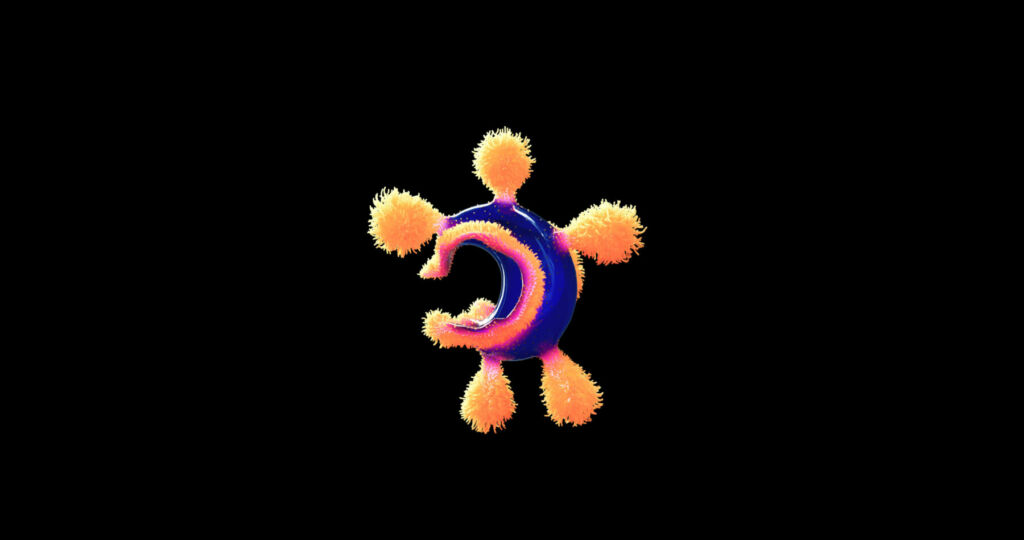
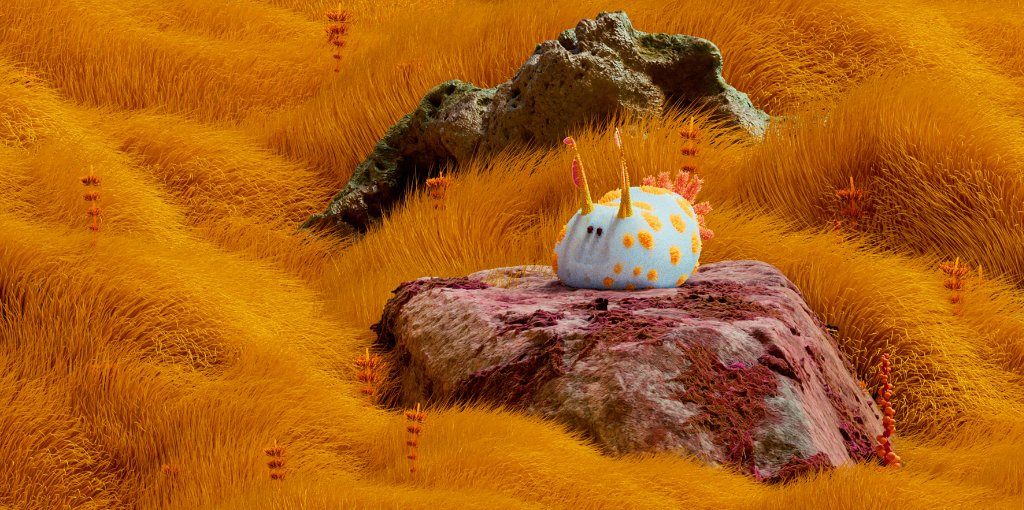
Immersiveness, Kunstkraftwerk’s key focus, is explored in different ways. Kling Klang Klong’s surprising installation Black Hole and Forest of Nothingness, demonstrates this early on. A theatrical journey into and through a black hole, the installation – minimal in its essence – catches the viewer off guard by revealing that it is in fact a physical sculpture accompanied by Kling Klang Klong’s distinctive sound design.
After witnessing aBioGenesis and having our minds trained to expect the digital we have to readjust our viewing preconceptions as we approach what at first appears to be a video, revealing itself upon closer inspection to be a protruding felt ball surrounded by a circular field of UV light, drawing us through its apex into a world made of hanging black sheets that mimic, as the title suggests, a forest of nothingness where the visitor’s own voice is ricocheted around the room in an eery, spacey echo.
The analogue is contrasted by impressive video mapping that takes place in the two largest halls of the Kunstkraftwerk, one of the best examples of large-scale immersive projections in the field. Both experiences are fully engulfing but they approach the action through very different techniques, keeping the viewer on our toes and refreshing our gallery experience. In the same way that ORIGINS finds an equilibrium in the use of varying mediums, the show also strikes a harmonious balance between scientific accuracy and artistic imagination [6].
The science is shown as science – for example David Attenborough’s intervention in the form of a narrated 3D glasses experience – and the art as art with the relationship between the two being seamless and uncontrived. There is a message in the show, one that the artists have extracted from the science. It is both foreboding and humbling. One of the most powerful aspects of ORIGINS is how it deliberately ends without showing humans – we’re just a tiny blip in evolutionary history [7]. This is the message: nature has been majestic for millennia before we came about and if we’re not careful, we may be the end of this beautiful cycle.
The playfulness and intrinsic beauty of the works mean that you leave the show feeling motivated rather than disheartened. This author hopes that throughout its five month running time ORIGINS will produce a band of newly empowered humans ready to protect our beautiful Earth. Put aside a good 60-90 minutes of your day and let yourself be taken away to other another time: to dance with unicellular organisms, to bath in prehistoric rain, to stand between the Sun and Mars and to let the birth of life wash over you.


